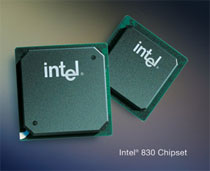 |
||
|
||
| ||
According to the ASUS site this ultra-portable notebook, combining the refined style and performance, will prove itself wherever you can go. So, image and portability are the most important things. Let's see it. Technical characteristics of the Asus S1 (specification)
Preinstalled software:
Accessories:
First impressionsThe designer's tricks typical of ASUS - right angles - are not strongly pronounced, though I can't say the notebook has a roundish shape. In general, it looks pleasant. The case made of the magnesium alloy is pleasant in color, but I didn't try to scratch it :)
 Front panel:
 The rear panel doesn't have much things, which is typical of ultra-portable devices - some connectors are located on the port-replicator (which, however, is to be bought separately).
 Left panel:
 The right panel has only an air vent. Ergonomics
 Let's open the lid. Frankly speaking, the design of the keyboard and touchpad is better in the other ASUS models, for example, the T9400. But tastes differ, you know. The plastic surface and plastic touchpad buttons and a semitransparent keyboard do not suit the general style.
 It is quite difficult to read markings of the instant buttons, but this is peculiar to this company. However, it doesn't affect the handling of the computer. The right button allows choosing the energy saving mode (we will speak about the modes later). The hardware rebooting button has become standard for the ASUS notebooks. The button, or rather the hole, is located on the underside. You should use something sharp to press it.
 The only speaker located below will hardly please lovers of good sound. But this is a cost of ultra portability :)
 There is nothing much I can say about the bag - well, this is good that it is supplied. Operation
 Before we turn to the operation of the notebook let's take a look at its salt - Intel(R) 830 chipset. The system bus works at 133 MHz, the memory is PC133 SDRAM. There are three modifications available - without integrated graphics and with two types of built-in graphics controllers. The 830M modification used in the tested sample comes with the most advanced graphics. This chipset uses the Dynamic Video Memory Technology (DVMT) which allows you to change the memory size allocated for the graphics controller, depending on tasks. Another new feature is the advanced energy saving control on the chipset level. There is a button located above the keyboard which switches the energy consumption modes. When you press it the modes change cyclically, and a pictogram of the current mode comes onto the screen - an airplane (the highest performance, the chipset's frequency doesn't change), a car, a bike and a walking man (the maximum power saving, reduced CPU frequency and screen backlight). In the Tests section we will show how the operating time depends on the selected mode. Although the notebook is not big, it's quite convenient to work with. There is nothing that irritates you. The model we tested has one "bad" pixel but it was noticeable only during booting - on the black background. Warranty and serviceThe notebook has 1-year worldwide warranty. The on-line support works efficiently. SiteThe Taiwanese site is excellent. It is easily comprehensible, the descriptions of the notebooks are detailed and illustrated. There is a base of drivers and BIOS updates. ModernizationYou can replace the processor and the hard drive and add memory, but you should do it in the service center till the end of the warranty period. Estimation
Total: 98 scores. What we reduced the scores for "-1" - for the design of the keyboard and touchpad (subjective). "-1" - scarce information on the sites in other languages. TestsAs the company placed emphasis on quality of the graphics adapter we included into the suite 3D graphics tests. We also extended the Ziff-Davis BatteryMark suite - the tests were carried out for each power saving mode.
As you can see, there is a big jump when we change the second power saving mode for the third one. The disc subsystem corresponds to the required level - this is not a modern desktop yet, but it is very close to the Quantum lct20. The video adapter performs excellently in the ZD WinBench; let's see whether it is able to handle tougher applications. MadOnion 3DMark 2001
Well, the controller is rather weak in the 3D graphics. Let's test the notebook in the game of all times and all peoples - Quake. Quake III - demo four (fps)
Well, it's possible to play, but the integrated graphics adapter falls by a great margin even behind the GeForce 2 Go installed in the Toshiba Satellite 2805-S402 notebook based on the Intel Pentium III 850 MHz (its results are given in parentheses). Here is one more test - Rage Games Expendable Expendable, timedemo (fps)
At present there is nothing to compare the result with, but in our future reviews we will definitely include these tests. Summary. ConclusionSubjective mark is 98 scores. Of course, this notebook is not the best model
for playing games, but it is unnecessary. In all other respects,
this is a good product from ASUS - the performance is high; the
style is what everyone should estimate himself. The base configuration
- Celeron 1.06 GHz, 128 MBytes/15.0 GBytes, CD ROM 24X - is priced
at $1395 (at Nexus), the tested model costs $2105. I'd rather take
the base configuration with the CD replaced with DVD (+ $80).
Write a comment below. No registration needed!
|
Platform · Video · Multimedia · Mobile · Other || About us & Privacy policy · Twitter · Facebook Copyright © Byrds Research & Publishing, Ltd., 1997–2011. All rights reserved. | |||||||||||||||||||||||||||||||||||||||||||||||||||||||||||||||||||||||||||||||||||||||||||||||||||||||||||||||||||||||||||||||